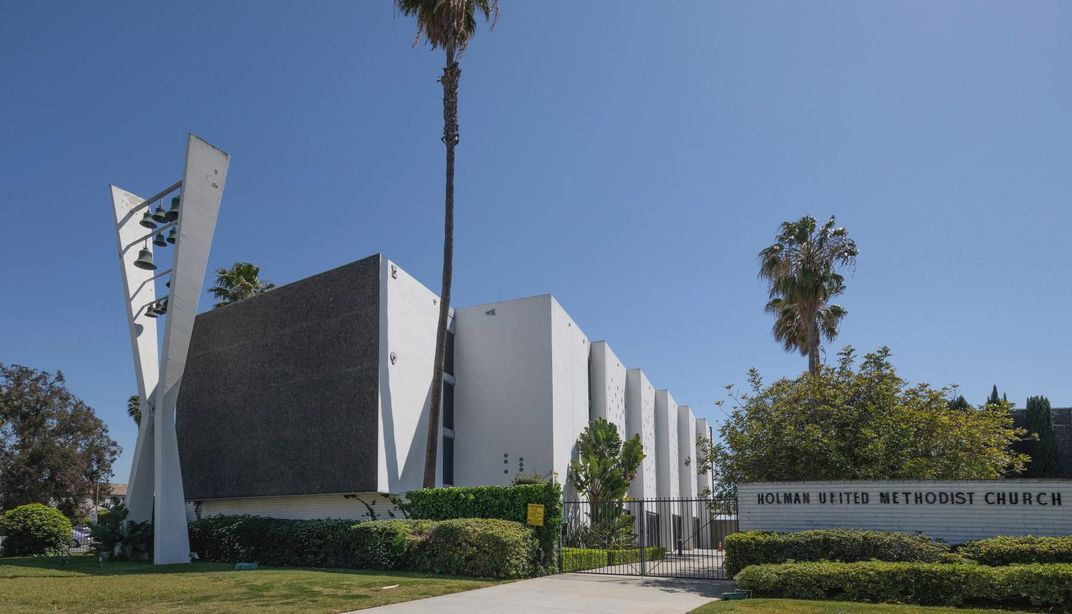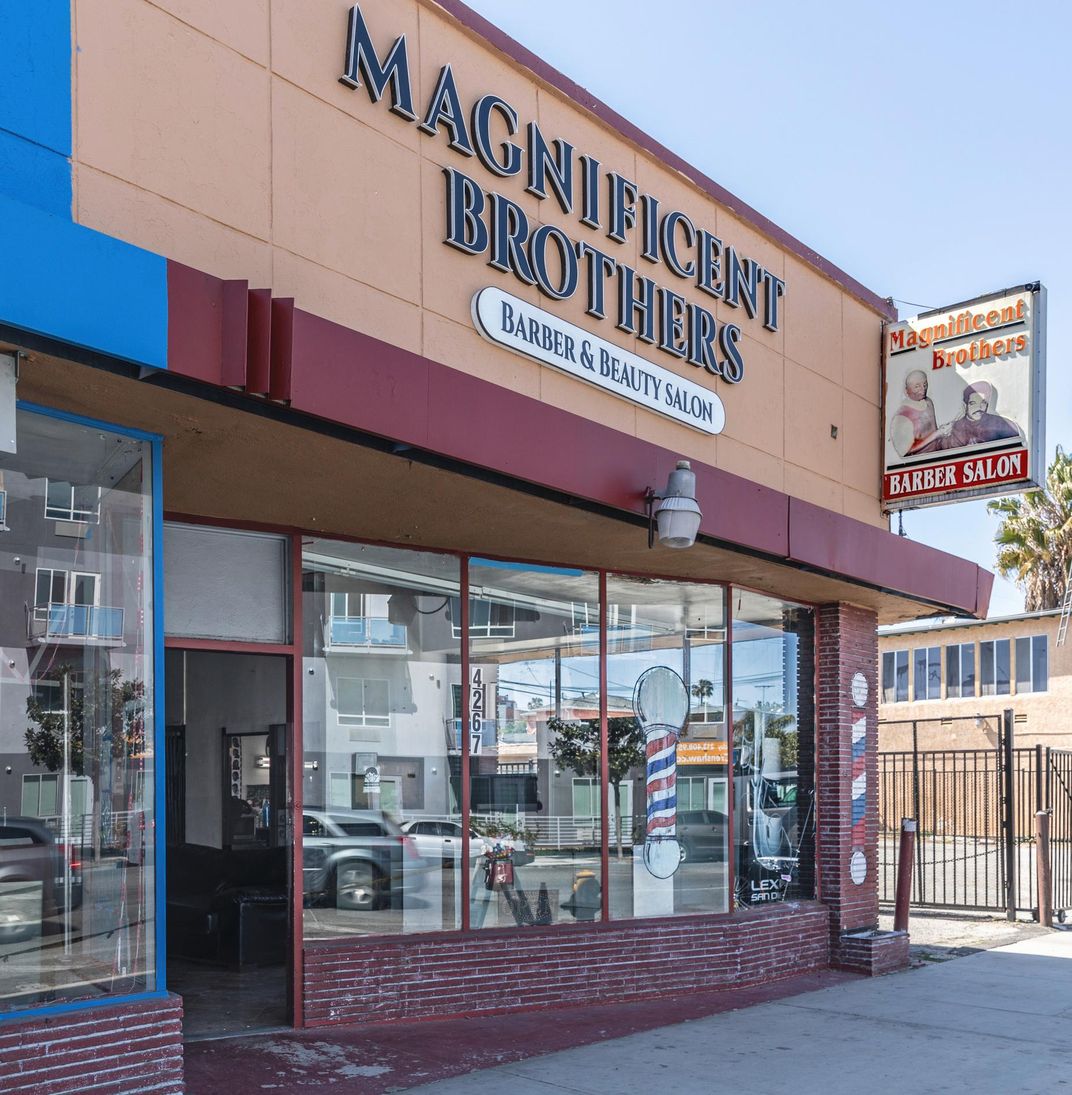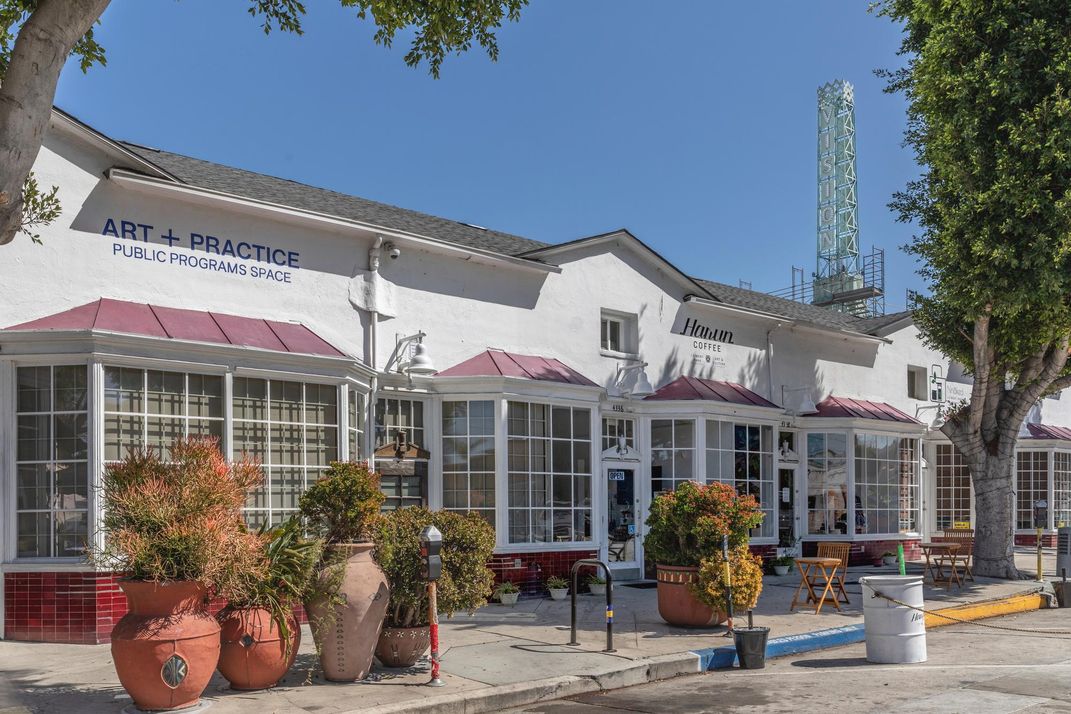How Los Angeles Plans to Preserve the City’s Black Cultural Heritage
Just 3 percent of L.A.’s historic landmarks commemorate African American history. A new three-year project hopes to change that
:focal(500x338:501x339)/https://tf-cmsv2-smithsonianmag-media.s3.amazonaws.com/filer/bd/b8/bdb88a4b-0c45-455f-b6ca-b97d04f3d4b8/aah_la_st_elmo_2021_ed2.jpeg)
Los Angeles’ historic landmarks include such well-known sites as the Hollywood Walk of Fame, the Hollywood sign and Griffith Observatory. But as Makeda Easter reports for the Los Angeles Times, the list of city-designated sites contains a noticeable disparity: Just 3 percent of the roughly 1,200 historic landmarks scattered throughout the California city commemorate African American heritage sites.
This week, the Getty Conservation Institute (GCI) and Los Angeles’ Office of Historic Resources (OHR) announced a new campaign designed to redress that imbalance. Through the three-year initiative, dubbed the Los Angeles African American Historic Places Project, the institutions will survey the city’s black cultural heritage sites, identify areas to prioritize for preservation and work with community members to better promote local black history. They also plan to provide internship opportunities for emerging professionals in the preservation field, reports Taylor Defoe for Artnet News.
Some of this work will involve the preservation of physical places that tell the story of African American people in Los Angeles. Per the project’s website, famous black-owned barber shops like Magnificent Brothers, among other local businesses and buildings, may be eligible for landmark status due to their longstanding centrality to the community’s social and cultural life.
Other sites up for consideration include the former home of the black-owned Brockman Gallery, which boosted emerging artists of color in Leimert Park during the late 20th century, and influential African American churches, such as Holman United Methodist, which was founded in 1945 on the city’s west side.
Officials could also consider St. Elmo Village, an arts compound founded in 1969 that has provided creative education for local children ever since. (A meeting of artists and community leaders at St. Elmo in July 2013, shortly after George Zimmerman’s killing of 17-year-old Trayvon Martin, sowed the seeds for the Black Lives Matter movement, as Lil Kalish reported for LAist in 2019.)
The project seeks to “rethink and potentially expand the heritage preservation toolkit”—a process that will require museum and conservation professionals to “[examine] how current historic preservation and planning processes and policies may be reinforcing systemic racism,” according to a Getty statement.
“The history of Los Angeles is incomplete without recognition of the African American individuals and institutions that shaped the economic, cultural and civic narrative of the region,” says Susan D. Anderson, a history curator at the California African American Museum in Los Angeles who participated in roundtable discussions related to the program’s development, in the statement.
She adds, “This important project will expand how heritage is defined and will provide an opportunity to work with local communities and residents to unearth stories that are vital to our understanding of the place we call home.”
OHR and the GCI have worked together in the past to chart Los Angeles’ rich history. Together, the institutions created SurveyLA, the city’s first-ever survey of historic resources dated to between approximately 1865 and 1980. The groups also launched HistoricPlacesLA, a website that allows the public to access these survey results, in 2015.
As Tim Whalen, director of the GCI, notes in the statement, centuries of systemic racism against African American people has contributed to a lack of scholarship and public funding for preserving black history in the city.
“Historic preservation is about the acknowledgment and elevation of places and stories,” he says. “The point of this work is to make sure that the stories and places of African Americans in Los Angeles are more present and complete than previously.”
Whalen adds, “The work is also about making sure that preservation methods are examined for systemic bias. It’s ultimately about equity.”
/https://tf-cmsv2-smithsonianmag-media.s3.amazonaws.com/accounts/headshot/nora.png)



/https://tf-cmsv2-smithsonianmag-media.s3.amazonaws.com/accounts/headshot/nora.png)